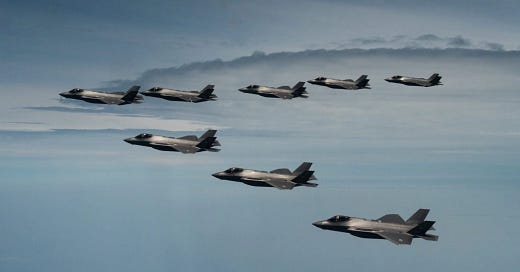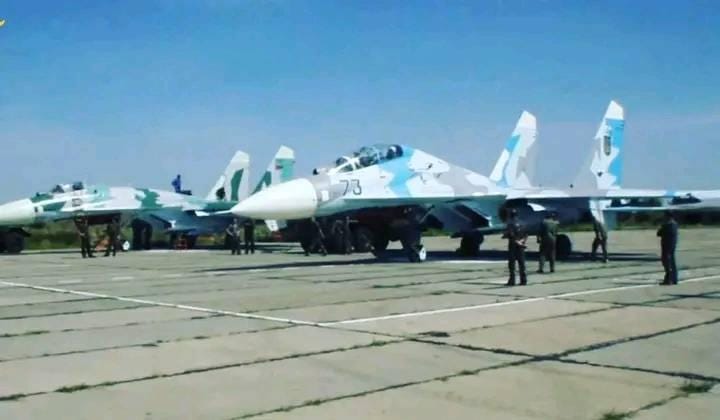The Pentagon’s Plan to Send Stealth Fighters Into North Korea Was ‘Cray Cray’
Experts said the scheme to shoot down Pyongyang's intercontinental ballistic missiles would've never actually worked
This story originally appeared in Vice.
In 2017, the U.S. military proposed to send stealth fighters into North Korea to shoot down intercontinental ballistic missiles and stop a possible nuclear attack on the United States.
But the scheme, which had the support of at least one key congressman, would’ve never worked. “Cray cray” is how Jeffrey Lewis, a nuclear expert at the Middlebury Institute of International Studies in California, described the plan to me.
The idea was simple, in theory. As an ICBM lifted off from its launcher somewhere in North Korea, an F-35 would quickly fire AIM-120 Advanced Medium-Range Air-to-Air Missiles, or AMRAAMs, and knock the rocket out of the sky.
According to trade publication Aviation Week, the Pentagon's Missile Defense Agency studied the concept, as did Northrop Grumman, which builds many of the F-35's systems.
And then the fighters-versus-rockets scheme gained a high-profile backer: then-congressman Duncan Hunter, a California Republican and a member of the House Armed Services Committee. “It’s like an act of God,” Hunter said at a missile-defense conference in Washington, D.C., in November 2017. “You have F-35s, you have AMRAAMs, and you can shoot these things down as they go up.”
There was no way that would’ve actually worked, several experts told me. For starters, AMRAAM missiles maneuver aerodynamically. They need atmosphere in order to steer. So an F-35 would have to shoot down the ICBM before it climbs above 100,000 feet. That gives the pilot just a few minutes to detect and engage the rocket.
“This sets such a short timescale for detection and interception you’d have to be very close to the launch site,” Laura Grego, a missile expert with the Massachusetts-based Union of Concerned Scientists, told me. “How do you get the F-35s in there safely? I think you would have to already be occupying North Korea to use it.”
And forget maintaining an around-the-clock patrol of F-35s near North Korean launch sites. Pyongyang’s air defense, including radars, missiles and guns, would’ve posed a constant danger to the waiting jets. Besides that, Pyongyang possesses mobile launchers that can hide in caves and emerge suddenly to quickly launch ICBMs, making it hard to predict where a blast-off might take place. “You’d have to get very lucky,” Lewis said.
Equally problematic, an F-35 can fly for only a couple of hours before needing to refuel. Long-term patrols could require large numbers of jets and aerial tankers. In 2017, the entire U.S. Pacific Command possessed just 16 F-35s, all based in Japan.
Then there’s the cost. A single hour of flying by an F-35 sets U.S. taxpayers back $30,000. In 2017, maintaining a single round-the-clock patrol of two F-35s could’ve required all 16 Japan-based F-35s and cost $3 million per day just for fuel and spare parts. That would’ve cost more than a billion dollars per year, all for a very small chance of shooting down a rocket.
The chilling truth is that there are few reliable ways of shooting down an ICBM. “Most analysts I take seriously are very skeptical about any ground-based missile-defense system being able to provide reliable protection against the North Korean ballistic missile threat, either to the region or to the mainland U.S.,” said nuclear expert and former congressional staffer Greg Thielmann.
That means the only way to prevent a long-range, nuclear-tipped rocket from striking the United States is to make sure it never launches. Missile-firing stealth fighters aren’t really an “act of God.” They can't replace diplomacy and deterrence.
Read more:
In 2006, Ethiopia's New Sukhoi Su-27 Fighters Spearheaded an Invasion of Somalia
Ethiopia’s tiny air force, which in the early 2000s was in danger of implosion, spearheaded the December 2006 assault into southern Somalia to drive out Islamic Courts and their militia forces. Beginning on Dec. 24, 2006, Sukhoi Su-27 Flanker fighter-bombers hit strategic targets and even struck ground troops while at least 3,00…






